Yarns to Love
Homegrown Cashmere
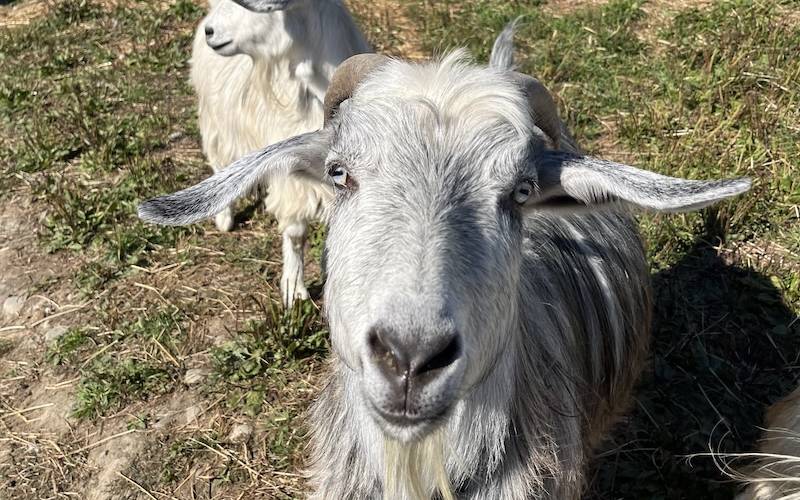
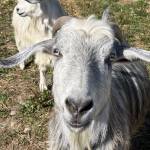
When Christine Hulse retired from her job as a school counselor in Cooperstown, New York, she didn’t intend to start Clean Cashmere, an all-American cashmere collective. And yet, here she is.
It started simply enough: she and her husband bought a small piece of land 20 years ago and liked the manageability of smaller farm animals. Cows and sheep require too much space and labor, which Christine knew from her time in 4-H as a kid. But goats? Especially cashmere goats? There was her answer.
“These goats were so majestic and the fiber was so amazing. And I saw a purpose,” she says.
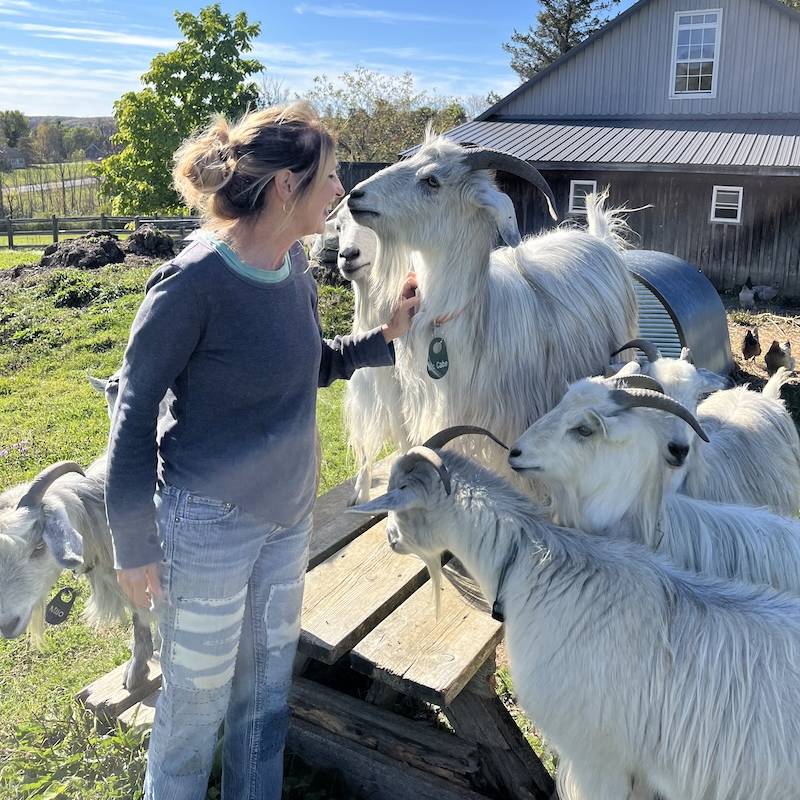
Fast forward a few years, and Christine is the secretary in the Cashmere Goat Association. With Nora Kravitz, an American ex-pat who runs Italy’s Chianti Cashmere, Christine helped pull together the International Cashmere symposium in Tuscany in 2015.
That’s where Christine met the Laverne to her Shirley: Heidi Dickens, a cashmere goat farmer from Oklahoma. At the conference, they realized that American cashmere had the same quality and was as sustainable as global producers. Both had fiber that wasn’t being used at any scale—and knew other farmers faced the same problem.
“We sat down after the conference, and said, why not? What do we have to lose?” Christine says.
Also working in their favor was one skill Heidi had that Christine didn’t. Heidi is an avid knitter and knew what yarns might fit the market. (Rest assured: Christine knits now.)
“After two years of market research, we’d figured out what the processing would look like and what the finished good would be: yarn. We started with the yarn because if knitters are like, ‘this is fantastic,’ then we would feel confident we were on to something.”
And they were. More cashmere goat farmers across the U.S. signed on. Some have flocks with hundreds of goats. Some can count their goats on one hand, like one woman in New Jersey with “five wethers she loves. She just wants to be part of the mission of what we’re doing and maybe knit with the yarn her goats have contributed to,” Christine says.
The mission itself centers on animal welfare, fiber quality, and environmental stewardship. In pursuit of that end, Clean Cashmere hopes to revive American cashmere. In order to do that, they also need to revive the American textile industry, whose infrastructure—like shearers, mills, and dye houses—is struggling to rebuild after years of closures.
The whole process starts with the goats, most of whom are combed by hand to harvest the fleece.
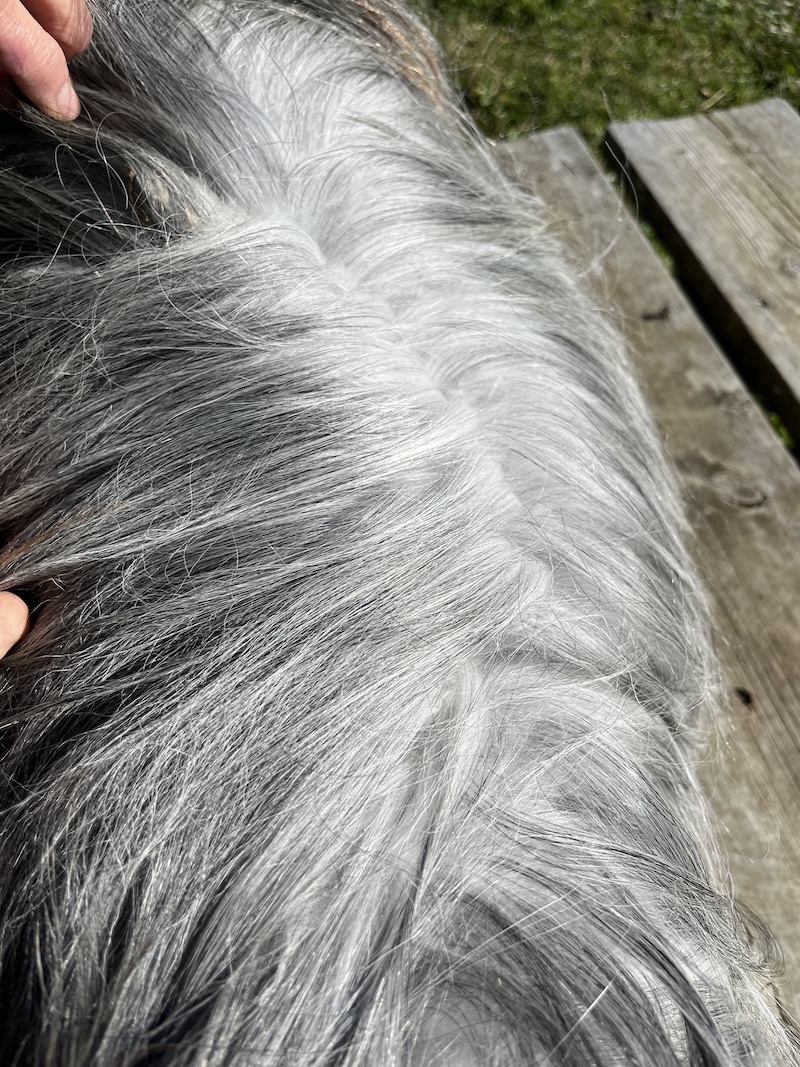
The cashmere fluff is protected by the aptly named guard hair. The goats are combed in the spring.
“A good goat will give me about six ounces of fiber, which needs to be combed out. Then all of those prickly guard hairs are pulled out. If I’m lucky, I lose just 50% of the weight after that. I’ll get three ounces. Then in the yarn making, I’ll lose more because there’s always waste. Three ounces of fleece won’t be three ounces of yarn,” Christine explains, when asked why cashmere is so pricey.
After combing, all of the farmers send their raw fleece to either Heidi or Christine, who sort it by color—black and non-black, basically. Then they grade the fiber length and micron count, which measures the softness (more or less).
Based on that info, the fibers will go into one of Clean Cashmere’s yarn blends: Prime (half merino/half cashmere), Dream (70% merino/30% cashmere), or Americana (60% Cormo/40% cashmere). The longest and softest fibers are reserved for Pure, which is 100% cashmere (and also 100% luscious).
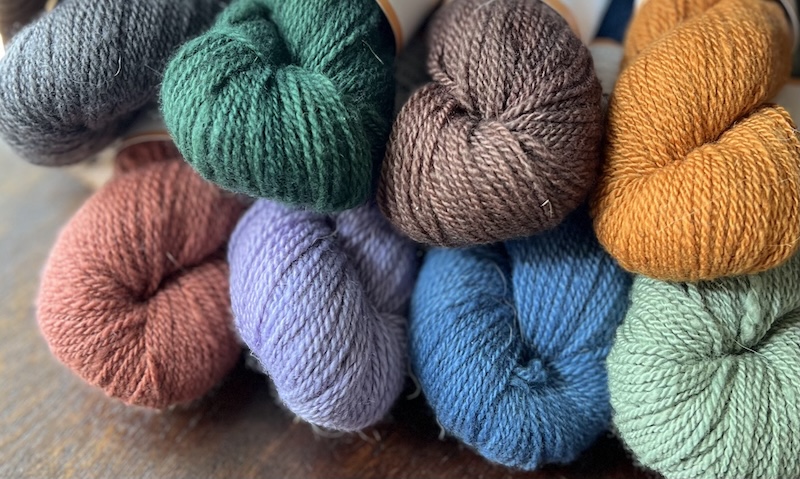 d
d
The yarn itself is dehaired, spun, and dyed at Still River Mill in Connecticut. Heidi dyes small batches of specific seasonal colors and yarns for the kit club at her farm.
What’s most striking about Christine is not her ease with the goats or her knowledge of the fiber. It’s her determined optimism for the continual work of growing this industry.
“I’m all about finding a way. If I can’t, I’ll find a back way,” she says. “I’ve seen the energy. I do believe we’re going to see more investors in American textiles—and you’re going to see more and more.”
Live, Laugh, Log Cabin
Ann and Kay have cooked up a Knit Stars class all about log cabin knitting, a way of knitting that can fill a lifetime of endless fun. Enrollment is open now, and the classes launch in November. Come see what the fuss is about!


What a great effort & a heartening mission to learn about – to revive the American textile industry, animal welfare & more. And what a rich life to have working towards this. I always wanted goats! Best wishes to this determined group.
Well said,Marilyn
Those goats are so cute
Thank you for introducing us to this wonderful group!
I love what Clean Cashmere is doing…thank you for sharing their story, Adrienne!
Great story about the cutie goats and this fab fibre.. but, but, but
– the 3 ounces of the fibre you get from a “good goat” – is it per year, per month, per combing? So – how often does that happen?
And what about mohair? Does mohair come from a different breed of goat or is mohair fibre a byproduct?
Thanks in advance for your answers!
Mohair is from the Angora goat. I know…the kids look rather like miniature poodles, sometimes leading to remarkable moments of confusion in the minds of innocent visitors.
They sheer/comb once a year. Not sure about mohair, tho. That’s a different story!
I just read American Flannel about the quest to bring back American textiles. Fabulous book! I’m so glad to hear about this effort to bring back American cashmere yarn. It gives me hope. I am doing my best to buy lots of yarn in support!
Thank you for sharing this beautiful story. I love seeing the goats and learning about the process of goat to yarn. Wishing the ladies success!!
Very exciting and inspiring. If I were young I would be looking to raise a few goats myself. Instead I’ll settle for searching out some of your fabulous yarn.
This was my thought, exactly! Appreciate hearing their story and continued success
Amazing story about the process to produce the yarn, thank you!
Inspiring! And I want to squish those skeins!
I think it was in Shear Spirit (not with me at the moment) that a cashmere goat farmer said something like sheep look up to you, something else looks down on you, but with goats it’s about even. I’ve always remembered that quote and it fits in right here, especially with that photo.
I have been to Still River Mill several times! My best friend lives in Storrs, CT and has generously driven me over there on various visits to the area. How great that this Clean Cashmere collective is getting highlighted 🙂
I have had the honor of sharing my life with four goats, albeit non cashmere ones. I tell people you haven’t lived until you’ve had the wonderful company of goats. I miss mine every day.
Where can we buy this yarn?
Oh your colors are so beautiful I can feel the love determination and thought solving you put into your project ! Bravo to you !
“Where theirs a will there is a way “ ! Love love love a “Good Cashmere Sweater “
Non itchy ones ! Keep rolling on !
How uplifting to learn about this!
I met Christine and purchased some beautiful cashmere yarn from her at the Washington County fairgrounds , Adirondack Fiber and Wool festival, last month.
The yarn is exquisite.
Great story, thank you for sharing! Good to see the revival of American made Cashmere available to us! Thank you too to Christine & Heidi for all of your hard work!
Wonderful! Thank you for this information!
Expensive! … Ahhh, so that’s why… 3 oz of “fluff” once or twice a year. Those goats are beautiful to look at too. I hope the US textile industry as a whole can inch it’s way back. I’d gladly pay more for US made fiber.
Is the yarn for sale anywhere?